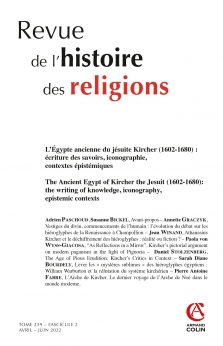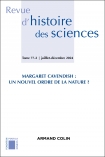
REVUE DE L'HISTOIRE DES RELIGIONS (2/2022)
Pour acheter ce numéro, contactez-nous
Recevez les numéros de l'année en cours et accédez à l'intégralité des articles en ligne.
Athanasius Kircher publie son Arca Noë en 1675 et s’inscrit dans une longue tradition d’exégèse chrétienne figurant l’Arche comme Église. L’Arche reste aussi le cadre d’une forme de zoologie, dont il tente de dégager des héritages mythiques en soustrayant en particulier le serpent ou la colombe à leur passif ou à leur actif symboliques. Kircher s’efforce de construire une équivalence Arche-Église-Empire et mobilise cette figure comme invocation d’une Espagne à l’échelle du monde qui appartient déjà au passé. Le traité est dédié au jeune Charles II dont le portrait figure dans un frontispice riche de multiples lectures, dans le sillage des grands ouvrages imprimés et illustrés produits par la Compagnie de Jésus durant tout le xviie siècle.
Athanasius Kircher published his Arca Noë in 1675 and continued a long tradition of Christian exegesis featuring the Ark as the Church. The Ark also remains the framework of a form of zoology, from which he tried to extract mythical legacies by subtracting in particular the serpent or the dove from their symbolic liabilities or assets. Kircher endeavoured to construct an equivalence between the Ark, the Church and the Empire and mobilised this figure as an invocation of Spain on the scale of a world that already belonged to the past. The treatise is dedicated to the young Charles II, whose portrait appears in a frontispiece rich in multiple readings, in the wake of the great printed and illustrated works produced by the Society of Jesus throughout the 17th century.

